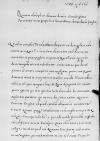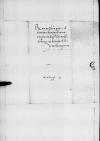Letter #3343
Johann von HÖFEN (Jan HARTOWSKI) to Ioannes DANTISCUSPiotrków, 1548-02-06
| received Heilsberg (Lidzbark Warmiński), 1548-02-14 Manuscript sources:
Prints:
| ||||||
Text & apparatus & commentary Plain text Text & commentary Text & apparatus
Reverendissimo in Christo Patri et Domino, domino
Reverendissim{a}e in Christo Pater et Domine, domine clementissime. Servitutis meae perpetuae humillima commendatione praemissa.
Quod in complectanda, educanda, patern{a}e denique elocanda sorore mea Reverendissima Paternitas Vestra se tam clementem exhibuerit, immortales et quas possum maximas Reverendissimae Paternitati Vestrae ago gratias, Deus Omnipotens erit retributor. Sororium eo, quo decet, favore et amore complecti non negligam, quem cum Reverendissimus Dominus meus in loco steterit, invisere curabo.
Verum adhuc nihil certi, quo tempore hinc  BCz, 1599, p. 1016
militum, tam equitum, quam peditum conscripti sunt. In magno metu hic omnes sunt collocati. Dominus palatinus Siradiensis nondum rediit, dicitur detentus esse. Nuntius
BCz, 1599, p. 1016
militum, tam equitum, quam peditum conscripti sunt. In magno metu hic omnes sunt collocati. Dominus palatinus Siradiensis nondum rediit, dicitur detentus esse. Nuntius
Commendo me Reverendissimae Paternitati Vestrae gratiae domino meo clementissimo, atque dominum Deum precor, ut Reverendissimam Paternitatem Vestram optime valentem mihi conspicere concedat.
Dat(ae) or Dat(um)⌈Dat(ae)Dat(ae) or Dat(um)⌉
Reverendissimae Paternitatis Vestrae servorum humillimus


